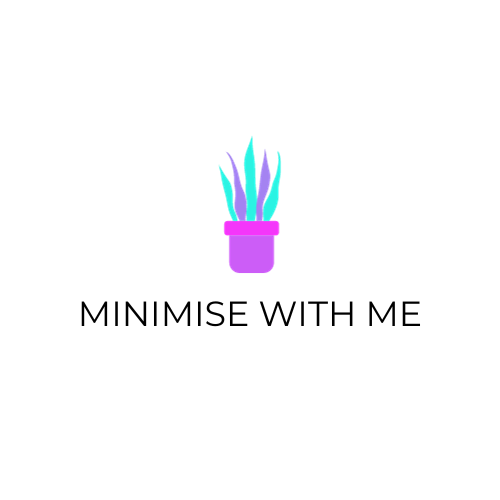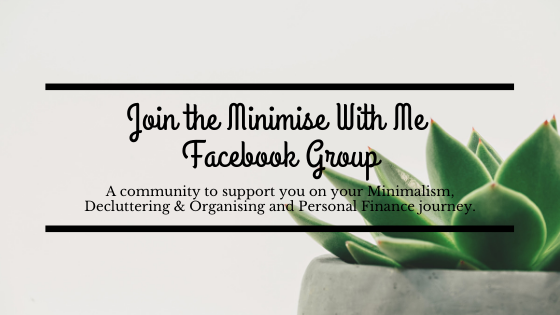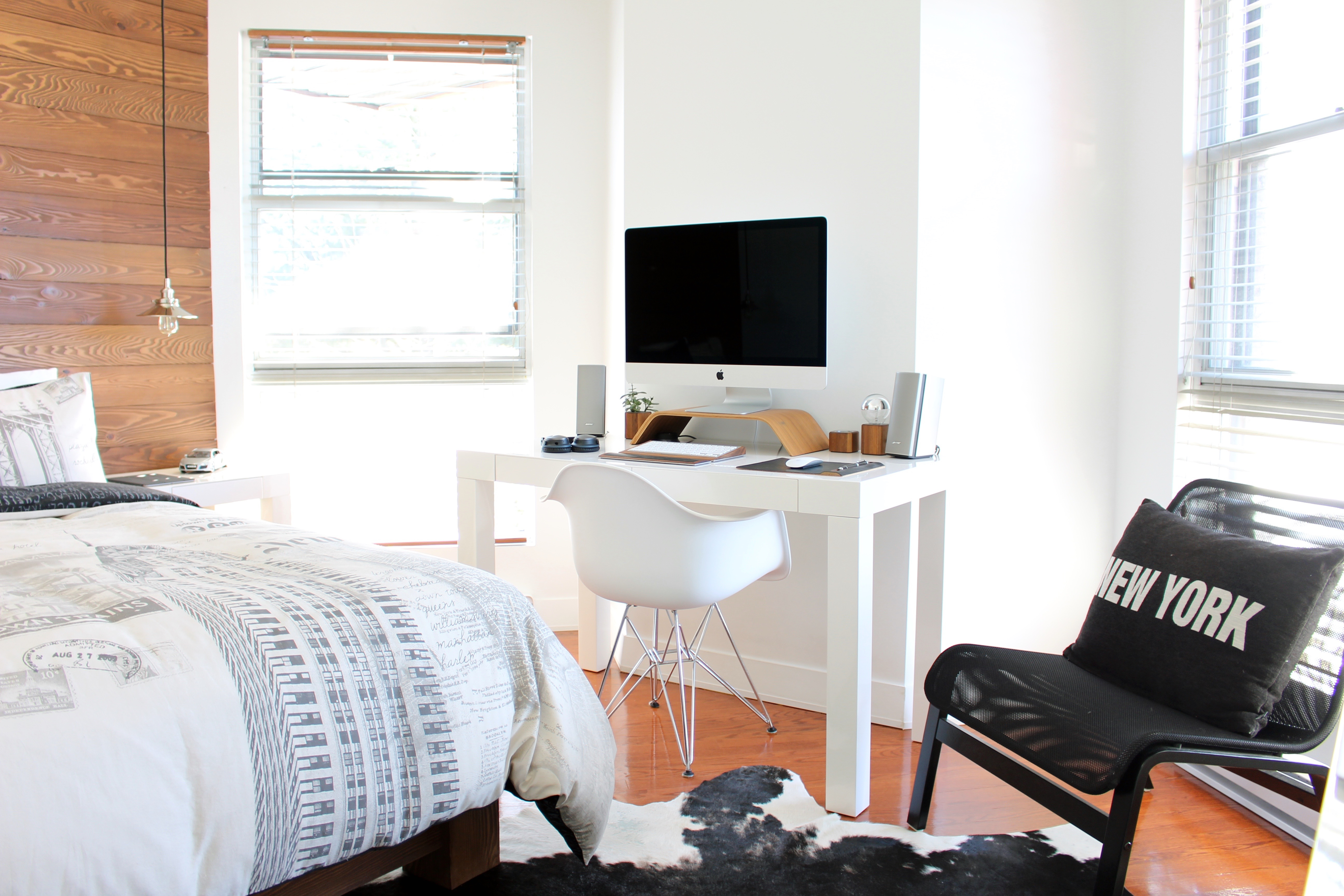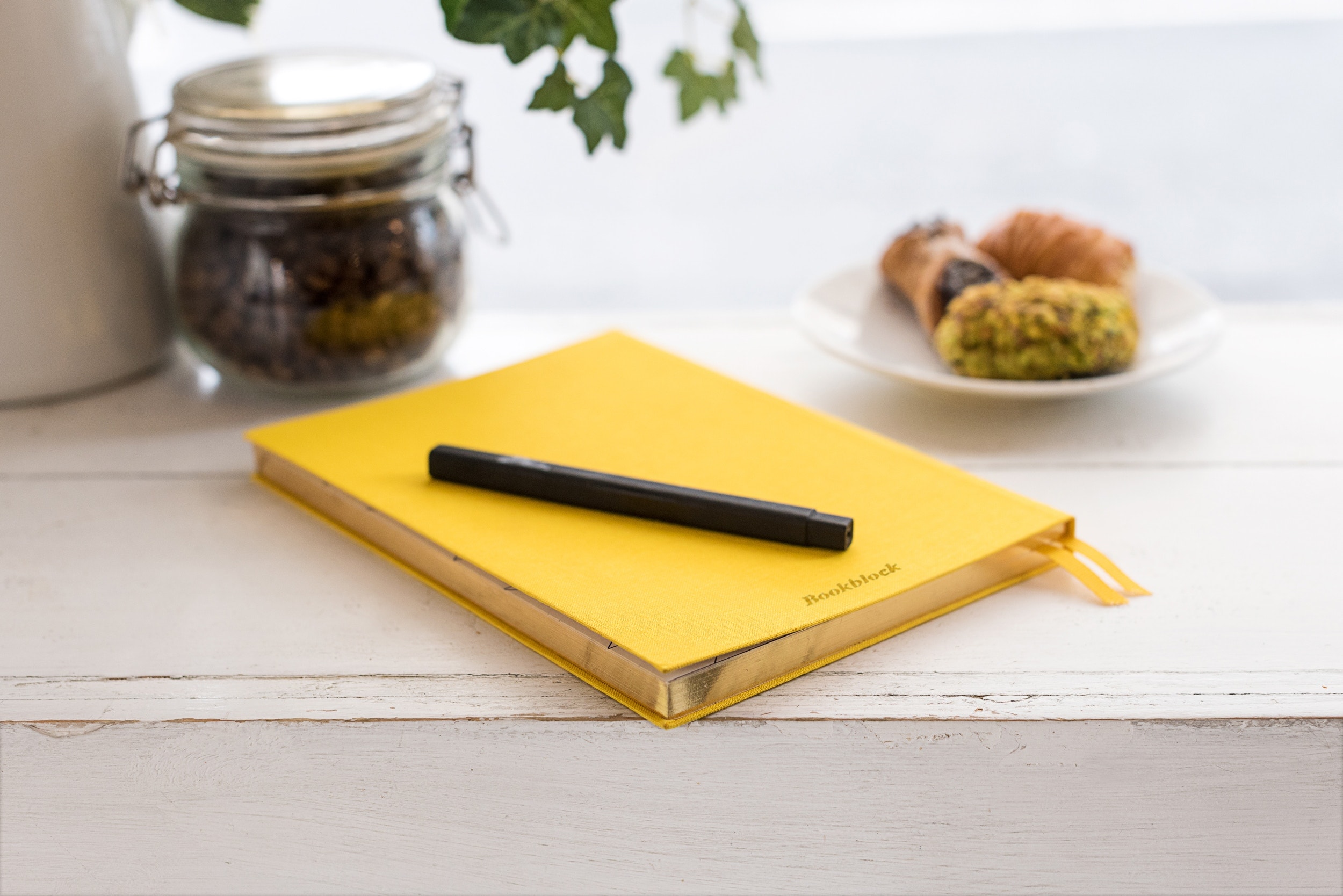Sometimes it can be hard to know where to start with decluttering, particularly when there are so many decluttering methods available and so many different forms of clutter. It can be difficult to know which decluttering method is going to be the most useful to you on your decluttering journey. And more often than not, you probably don’t have the time or patience to research or try them all out.
A couple of years ago I too was frustrated with the amount of stuff that had accumulated in my humble sized home. Every cupboard, drawer, shelf, the countertop was filled with stuff and added stress to everyday life. Trying to cook dinner was a chore with piles of stuff on our small kitchen island that was hard enough to prepare meals with. It was a fight every time I tried to open a cupboard to get a set of sheets or towel out. Getting dressed often involved pulling out endless clothes only to realise that nothing went together, no longer fit, or had a button missing.
I knew something had to change and so I set out decluttering every area of my home that I could think of. Not a single drawer, shelf or cupboard was safe. It was a slow process I carried out in my spare time day-to-day over a period of 2 years. Lucky for me I found it therapeutic and it became something I am really passionate about.
Of course, that isn’t the case for everyone – some people find the process tiresome and tedious and may just not have the time to dedicate to decluttering or researching different decluttering methods. so I am here to save you the trouble (at least some of it)!
Since starting my decluttering journey, I have researched and tried and tested many decluttering methods so keep reading for a brief introduction to some decluttering methods from some amazing minimalism bloggers like The Minimalists and Courtney Carver at Be More With Less.
Here are 9 Top Decluttering Methods to Declutter Your Home that I believe on their own or in unison, can help you get on your way to a more decluttered home that you love!
9 Methods to Declutter Your Home
1. The Konmari Methid – Organising by category
The Konmari method of decluttering was created by organising expert Marie Kondo and is based on identifying what you want to keep, rather than what to get rid of. The decision on whether to keep each item is decided by asking if the item sparks joy. If the answer is yes, it goes in the keep pile. If no, it goes in the donate or trash pile.
The approach to this method is to declutter by one category at a time, rather than location. If you have books in different rooms, you are to move all of them into one location and sort all of them at once. This allows you to see the vast amount of stuff you have of one category and helps you to avoid keeping multiples of things you might not have known you had, if they were kept in separate locations.
Take clothes for example, if you have some in your drawers, cupboard in the hall closet and have some in the laundry you may not realise how many clothes you really have until they are piled up on your bed in a clothing mountain.
The Konmari method sets out the order for decluttering which is based on perfecting your decluttering skills before you move onto the harder items like sentimental items.
Marie Kondo suggests the order of decluttering your home is: clothes, books, papers, komono (miscellaneous household items like valuables, craft supplies, stuff for hobbies, office supplies, electronics and kitchen items) and finally, sentimental items.
Pros: This decluttering method focuses on identifying what you love rather than what you don’t. Over time it allows you to be more aware of what you do love and what you don’t. It also encourages us to be thankful for what we do have and appreciate our things as we say thank you to each parted item. Part of decluttering is to learn to be grateful for what we do have so the Konmari method really speaks to that.
Cons: Taking every item from one category such as clothing can be extremely time consuming and overwhelming. Marie Kondo, says that decluttering is a special event to be done once, so this might be too big of an undertaking for some with smaller pockets of time. This method also can make it harder to let your stuff go if you find yourself saying everything sparks joy.
2. Four Box Method – relocate, donate, trash, sell
The four-box method of decluttering allows you to make quick decisions and tackle small areas to declutter. Start with grabbing four boxes, containers, washing baskets or whatever you have on hand and labelling them with Keep, Toss, Donate and Sell. As you move through each area make a decision for each piece in the area you are decluttering and place it into the appropriate box.
This decluttering method can be flexible to sort through a whole room or a small area and can be used for quick decluttering or bigger time slots. Anything you decide to keep can stay in the same location.
Keep: Anything you love that you want to hold onto.
Toss: This is for any items you no longer need or want that are damaged, unsaleable or not in good condition to donate. Sometimes it is best to split this into two containers one for trash and one for recyclables. Just bring your regular recycling bin into the room ready for any recycling. Do your bit for the environment and dispose of each item as thoughtfully as possible. If it can be donated, recycled or sold take that option and limit what ends up in landfill.
Donate: These are any items that you no longer want or need, that are in good condition and could be used by other people. When the box is full put it in your boot and drop it off at your local charity bin or shop.
Sell: This container is for any items of value that you no longer want, but that you could sell on eBay, Facebook or local buy, swap sell sites. I would recommend setting a $20 limit, if you can’t sell any items for more than $20 it is probably not going to be worth the time and effort to list it and deal with shipping it or arranging a pick-up. If you are in need of cash and have the time by all means set a lower limit.
Pros: This decluttering method helps you to easily keep track of each item and sort it with one touch. It gives you 4 options to help limit any overwhelm from decision making. Sometimes having the decision based on what to keep, rather than what to get rid of makes for easier decision making on what to keep or dispose of.
Cons: This decluttering method doesn’t really give you any guidelines on where to start like the Konmari method.
3. The Minimalists Packing Party
The Packing Party is a game established by the Minimalists Ryan Nicodemus and Joshua Fields Millburn for people who don’t want to take a year to declutter their stuff and want fast results.
The idea is that you box up all of your possessions and only take out each item as you need them to decide what you do use and what you don’t. As you need towels, plates, clothes, shoes and other items take them out of the box. After 21 days see what you didn’t touch and make a decision on what’s left as to whether it stays or goes. If there is anything not out of the boxes consider whether it truly adds value to your life and consider selling, donating, giving it away or trashing it.
Pros: A great method if you don’t want to spend months decluttering or longer. Allows you to declutter your home quickly and see what you do and don’t use on a regular basis.
Cons: This can seem like a pretty extreme, messy decluttering method. It may save time decluttering and speed up the process, but packing up all of your stuff is going to take a significant amount of time in itself.
Minimise With Me’s Tip: If packing up your entire house seems daunting, unnecessary or impossible, try packing up one area at a time. Your towels, make-up, wardrobe, your kitchen utensils, plates and cups. After 3 weeks assess what you didn’t need from each area and declutter accordingly.
4. The Minimalists Mins Game
The Mins Game is a game developed by The Minimalists to make decluttering a little more fun and to ease you into the process.
Start off on day one decluttering one item. Day two declutter two items. Day three, three items and so on until you get to day 30 where you declutter 30 items.
Over the space of 30 days, you will have decluttered a total of 465 items. A great game to start off a new month and keep you on your toes.
To keep you motivated and keep track of your progress you can post your photos with #minsgame to look back on your decluttering journey and see others’ progress to help motivate you.
Pros: Builds momentum, starting small with one item and gradually increasing the number. Great way to motivate you to declutter a large number of items in a small space of time.
Cons: It can be frustrating initially to only declutter one item. Not extremely flexible in terms of time as you need to have more and more time to declutter as the month progresses which may not suit your schedule.
5. The Minimalists 90/90 rule
The 90/90 rule is one that you can use to look forward in time and backwards to make a decision on what to keep. It can be applied to your wardrobe or whatever else you like by simply asking ‘Have I used this in the last 90 days and do I see myself using it in the next 90 days’?
If there is something you have been holding onto ‘just in case’, ask yourself the question.
Writing a list of these items can help keep track of what things you are considering. Over the next three months be mindful of the item. If you have a use for it, you’re most likely going to use the item over that time frame. If at the end of that six month assessment period you still are yet to use an item and it isn’t something seasonal, consider if it is something you truly need. The 20/20 rule below can help you make this decision.
Pros: This can speed up the decluttering process by allowing you to consider the past three months in your decision rather than only looking ahead like the backwards hanger method.
Cons: This decluttering method doesn’t take into account that some items are things that you want to keep but might only use for a small period of the year such as seasonal items like ski equipment. For these items, it is probably best to stretch the assessment period to looking back six months and forward six months as opposed to three.
6. The Minimalists 20/20 Just in Case Rule:
The 20/20 Just in Case rule is a helpful tool to allow you to let go of those ‘Just In Case’ items that you aren’t using but keep you thinking – what if I need it one day?
This rule can be used in conjunction with the 90/90 rule and sets out that if you don’t need something but feel like you should hang onto it just in case you need it one day, consider whether you can replace that item within 20 minutes for less than $20. If that is the case, let it go.
You’ll often find that 99% of the time, what you have donated or sold won’t be missed. If there is that one item that you ended up needing you can easily go and reacquire it without having it take up valuable storage space in your home when you are not using it and at $20 it won’t blow your budget.
Pros: Helps in letting go of some of those ‘just in case’ items you’re reluctant to get rid of.
Cons: You may have a handful of items that you dispose of that you have to repurchase at a later date. By being honest with whether you need something, this will be kept to a minimum.
Methods to Declutter Your Wardrobe
Here are some decluttering methods specifically aimed at decluttering your wardrobe and help you to build a more curated wardrobe that you love!
7. The Backwards Hanger Method
This decluttering method is used to downsize your wardrobe and assess what you do and don’t wear.
Simply take all the clothes on your hangers and turn them backwards so the coat hanger hook is facing towards you. As you wear each piece and wash it, return the item to the wardrobe facing forward. Set a note on your calendar for three, six or twelve months, whatever you prefer, to remind you to review what you have and haven’t worn in that time.
Whatever is still facing backwards at the end of the calendar period is what hasn’t been worn and can probably be donated or sold. Keep in mind that some items like coats, will not be worn for 3-6 months across the summer months so it is probably best to separate your clothes by season and only include the clothes you will wear that season for review.
Pros: Takes the difficulty out of decluttering your wardrobe. Just set a reminder on your phone and have a reassessment at a later date. Allows you to ‘save’ clothes that you might have put off wearing and will encourage you to wear your favourite item more.
Cons: It is only useful for clothing and for items that you have hung up. If you don’t have much hanging space it won’t allow you to declutter much of your wardrobe.
8. Courtney Carver’s Project 333 Capsule Wardrobe
Courtney Carver’s Project 333 is a capsule wardrobe challenge to only wear 33 items. It includes clothing, accessories, jewellery, outerwear and shoes over a three month period. It excludes sentimental jewellery that you never take off, underwear, sleepwear, in-home loungewear, and workout clothing.
Once you have picked 33 items that you love and that can be mixed and matched, box up the remainder of your wardrobe, seal it with tape and put it out of sight. This capsule wardrobe is created every three months in order to tailor a wardrobe for each season of the year.
Pros: Takes the stress out of getting dressed every day. Everything in your wardrobe is something that you love wearing so you won’t have to stand at your wardrobe each morning looking through clothes you don’t like or wear. Helps you to get to know what clothing you enjoy wearing and what suits you so you can reduce buying clothes that end up unworn.
Cons: Paring down to 33 items for 3 months is definitely a challenge. If you can’t do 33 items, set a reasonable limit – 40 or 50 and see if you can manage that and try and pair it down with your next three-month wardrobe. It is meant to help you streamline your wardrobe not torture you.
9. Minimise With Me’s Drawer Rotation Method
After all my research on decluttering methods, I haven’t really found any decluttering method that catered to clothing that was not hung up but folded in drawers. I wouldn’t have been able to hang up all my clothes in my wardrobe due to the space limits. I also wanted to avoid going out and buying more coat hangers or special hangers to hold up singlets, shorts and the like, temporarily. I wanted a decluttering method that would allow me to assess what clothes I did and didn’t use, like the backwards hanger method for the clothing hung up in my wardrobe, but for the clothing, I kept in my drawers.
I came up with the Drawer Rotation Method which is a system I use, along with the Konmari Folding Technique, where you put your clean, folded washing to the back of your drawers – rather than in front.
This encourages you to wear all the items in your drawers, not just the items that you regularly wear and put back to the front, leaving the back items to sit for weeks or even months unworn and potentially forgotten, cluttering up your drawers.
This Drawer Rotation Method has helped me to keep an even rotation of the clothes I wear that are folded in drawers. It also helps to identify what you do and don’t wear. After a while, that old shirt that you hate wearing will be sitting at the front of your drawer as a constant reminder of how it might be time to donate or trash it.
Pros: Helps you to assess which clothes in your drawers you wear more frequently over a period of time and which ones you can declutter.
Cons: Only works if you use the Konmari folding technique where clothes as stacked horizontally in parcels, rather than in vertical, less-visible piles.
Have you tried any of the above decluttering methods? Did you find them helpful? Have you come across any others that have helped you? Please comment below with what has helped you declutter your home!
Declutter With Me Decluttering Course
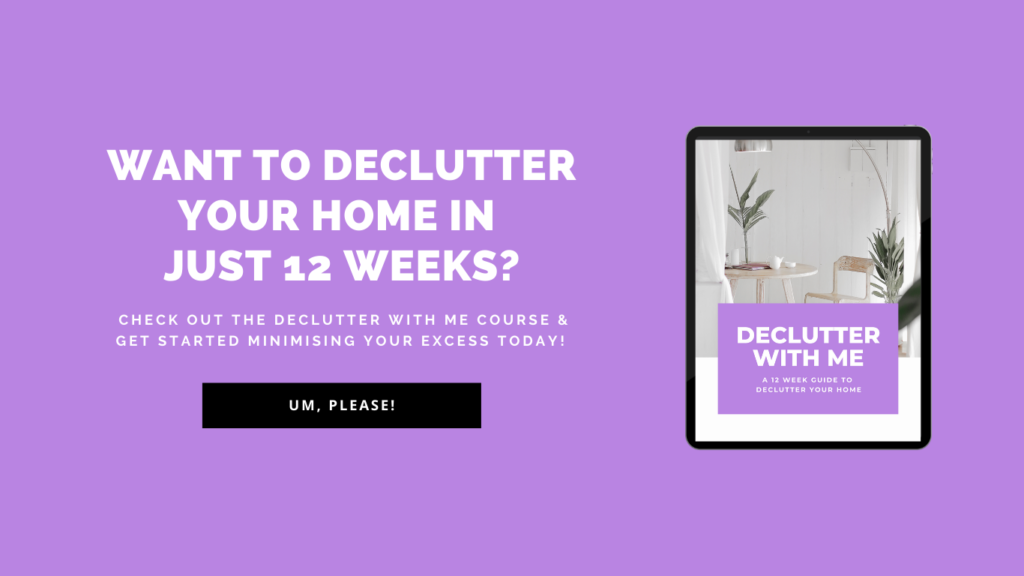
Are you finding yourself overwhelmed and stressed out by clutter in your home?
If you’re looking to minimise the excess in your life, Declutter With Me: A 12 Week Guide to Declutter Your Home is a go-at-your-own-pace course that will give you the step-by-step, room-by-room instructions to help you clear the clutter in your home in as soon as just 12 weeks!
But clearing the clutter isn’t just about getting rid of your excess stuff. It’s important to change your behaviour and consumer habits so you can avoid re-cluttering your space once you have decluttered. Included in Declutter With Me, are “Keep It Minimal” tips for each area in your home + 7 Tips To Help You Keep Your Home Minimal, to give you strategies you can implement to help you spend with intention so you can avoid bringing clutter back into your home.
If you are keen to minimise your unwanted clutter check out Declutter With Me so you can create a home you love!
